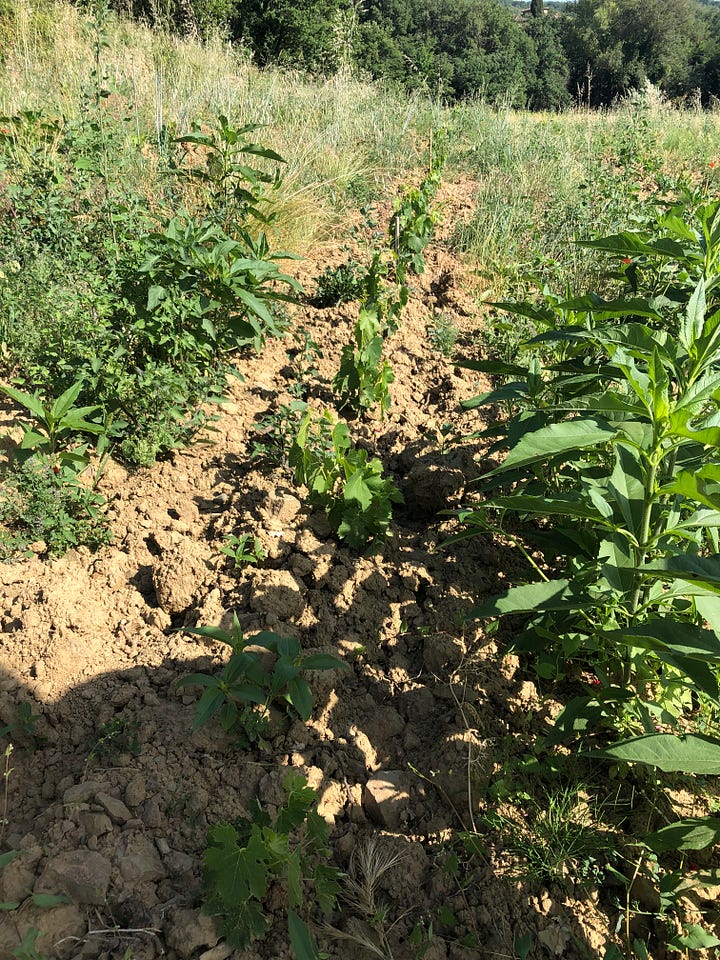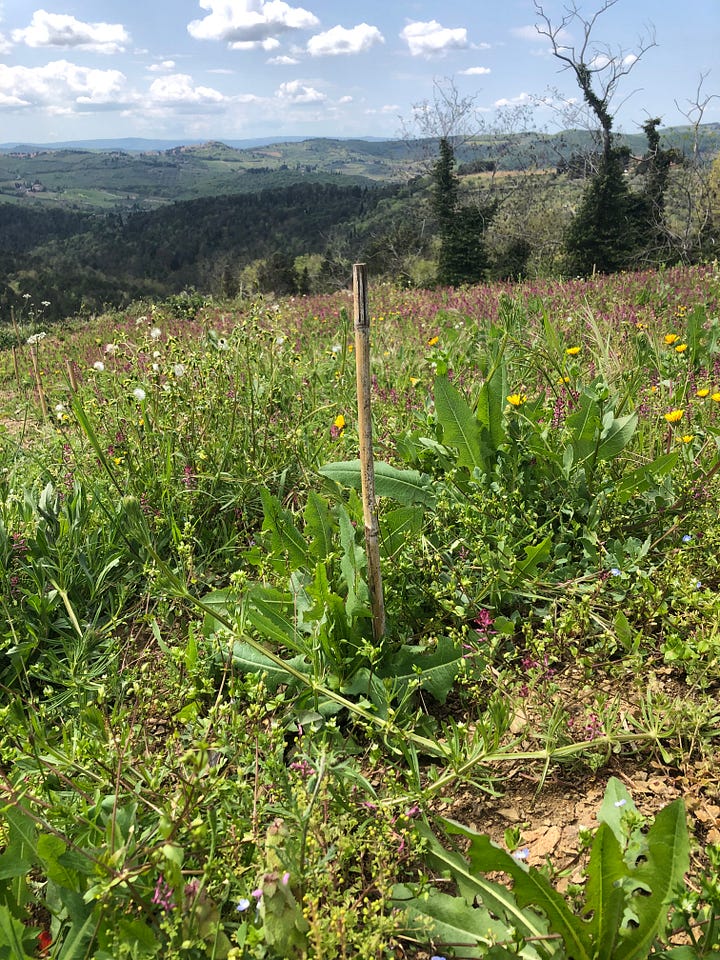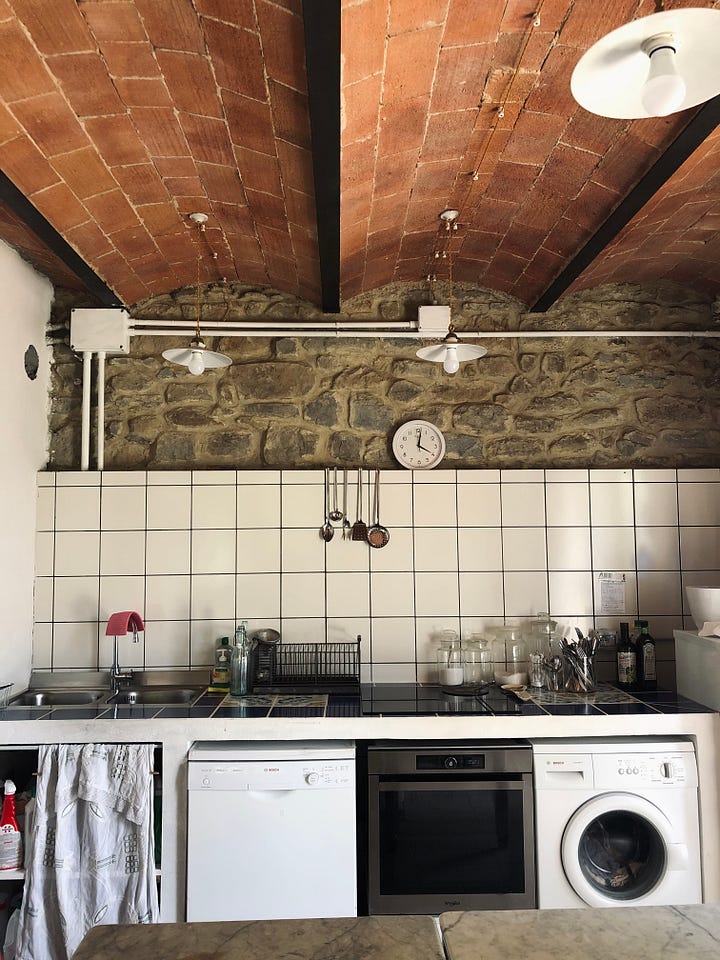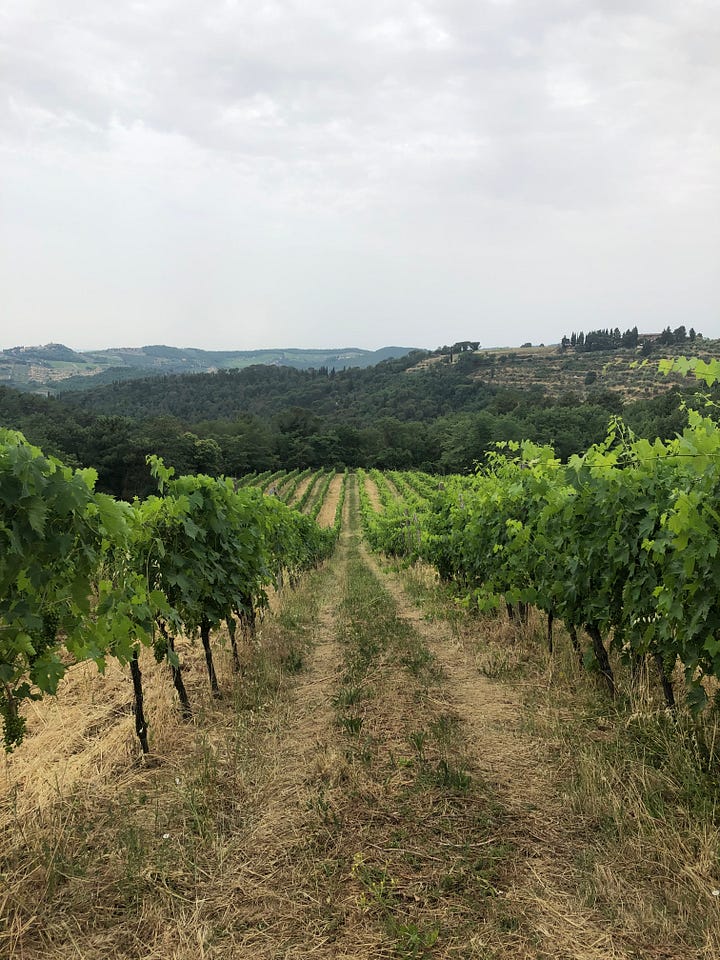I Fabbri
Ancient terraces, sustainable agriculture and female mentorship in Lamole
Lamole is a unique region of Chianti. This area ranges from 450-650 meters above sea level, allowing for a cooler climate in the brutal summer months. We were tucked away in the hills and surrounded by more biodiversity than in other areas of Chianti Classico. Before my knowledge of low intervention winemaking and organic farming, I would have considered the vineyards of I Fabbri to be unkept and mismanaged. They looked abandoned, surrounded by overgrown plants. It was the exact opposite of the parceled, organized Napa Valley floor that acted as the background on my commute up and down Silverado Trail four years ago. Susanna Grassi, the heart of I Fabbri, explained to me that this extra plant growth is what made all the difference, the other plants (not all cover crops) helped retain humidity and moisture in the soil and provided shade for the newly planted grape vines.


How do I find these wines? Well, there is a small natural wine shop in Trastevere called Les Vignerons. The owner’s name is Antonio, and I owe him a lot of credit for introducing me to the wine producers that shaped my thesis and experiences over the last two years. I told him I wanted to drink something from Chianti that I could pair against a conventional wine so my roommates could taste the two side by side. I also wanted to learn about more female Italian winemakers. I purchased I Fabbri’s entry level Chianti Classico, 100 percent Sangiovese. The label is the same label as the one her grandfather used two generations before when he bottled his wine. It was the perfect Italian red. After I finished the bottle, I sent her an email asking if I could have brief chat to learn more about her story, winemaking, and farming ethos. She invited me to come to visit the property and taste the wines in person so of course, that is what I did.
A train to Florence, a bus to Greve, and a sandwich in my backpack. I have learned that Florence really does the best panino. Susanna picked me up “in front of the church” (only directions I was given) and drove me up into the hills to Lamole. The unique thing about the vineyards are the centuries old terraces they sit on, which help stabilize water run-off and erosion, especially at this higher elevation.
She brought out some wines to taste when a couple showed up, unplanned at the tasting room. The tasting room is actually a small castello, from the 1200s. Of course, we invited them to join our tasting. I was gifted a bottle of Terra di Lamole, a more refined version of the first bottle, made from Sangiovese and Canaiolo. I shared it with my best friend in Rome one night, and we paired it with a giant pot of vegetarian sugo; tomato passata with zucchini, carrots, and fresh herbs grown on our patio.


Fast forward a few months later, I returned to I Fabbri, same train, and bus to Greve, but this time I would stay for a week and volunteer my time the vineyard and tasting room to better understand the sustainability practices from a more personal perspective. Susanna welcomed me into her home and allowed me to stay in her son’s old bedroom. In the mornings I joined the crew in the vineyard, our tasks for the week included “fixing the wines” (think pulling your long hair up into a bun). This protect the grapes from the intense heat and sunshine and wind and creates a small microclimate for the grapevine.


After working in the vineyard, I headed to the tasting room and set up for the afternoon tours. It was fun to explain the wines, the territory, and the principles of organic viticulture to Americans who had no idea about the gem of a winery they stumbled upon. After they left, I ate the last piece of the summer squash lasagna and one of the red wines that we forgot to pull out of the fridge. I learned that it is better to store wine in the fridge than at above 80-degree temperature, which is normally the temperature inside during the summer. There really is no better way to educate people about wine than by being at the source. When I talked about how high in elevation we were compared to the rest of Chianti, they could see it, because they were in the car that drove up the hill. When I talked about the biodiversity surrounding the vineyard, they could see it, because the bugs and birds in the trees were buzzing around us. When I showed them that the bottle they liked was in fact made with a small bit of Merlot, they were surprised. That’s good though, I like shocking Americans with fun Italian wine facts.
Aside from the wine, the vineyard, and the tastings, Susanna is a wonderful person and truly provided with me with the mentorship I need when I started my natural wine journey through Italy. She told me her family's stories and gave me insight into finding the balance between building a family and a business. I decided to move to Italy because there was so much to learn about how simple food grown responsibly, makes the best meals. She proved that through a large pot of lentils, and sauteed squash blossoms. It’s not about the cooking, or the winemaking, it’s about the ingredients.
I wrote a bit more about my experience at I Fabbri in the post linked below –
sometimes it is hard to articulate and even describe the moments I had with winemakers because well, I was living there, and it was my life. It was not a business or a press trip, it was personal, and wine is so much more than 750 mL of liquid, or a review in 200 characters or less.
I found a few bottles of I Fabbri wines in DC, and they also ship directly from the winery. If you wanted to purchase some wine, I highly recommend adding a bottle of olive oil, too. I hope I can take a group of like-minded people to Lamole in the future. There is so much great wine in Italy, sometimes it just takes a weirdo like me to find the wineries that are 500 meters up, I want to share these hidden gems with others.
If it was not obvious, I Fabbri meets the sustainability criteria that I always look for when meeting with producers. All of the information about the organizations I Fabbri is a part of (Biodistretto del Chianti, Slow Wine and FIVI) is on the website, including their sustainability practices.
Enjoy research!




